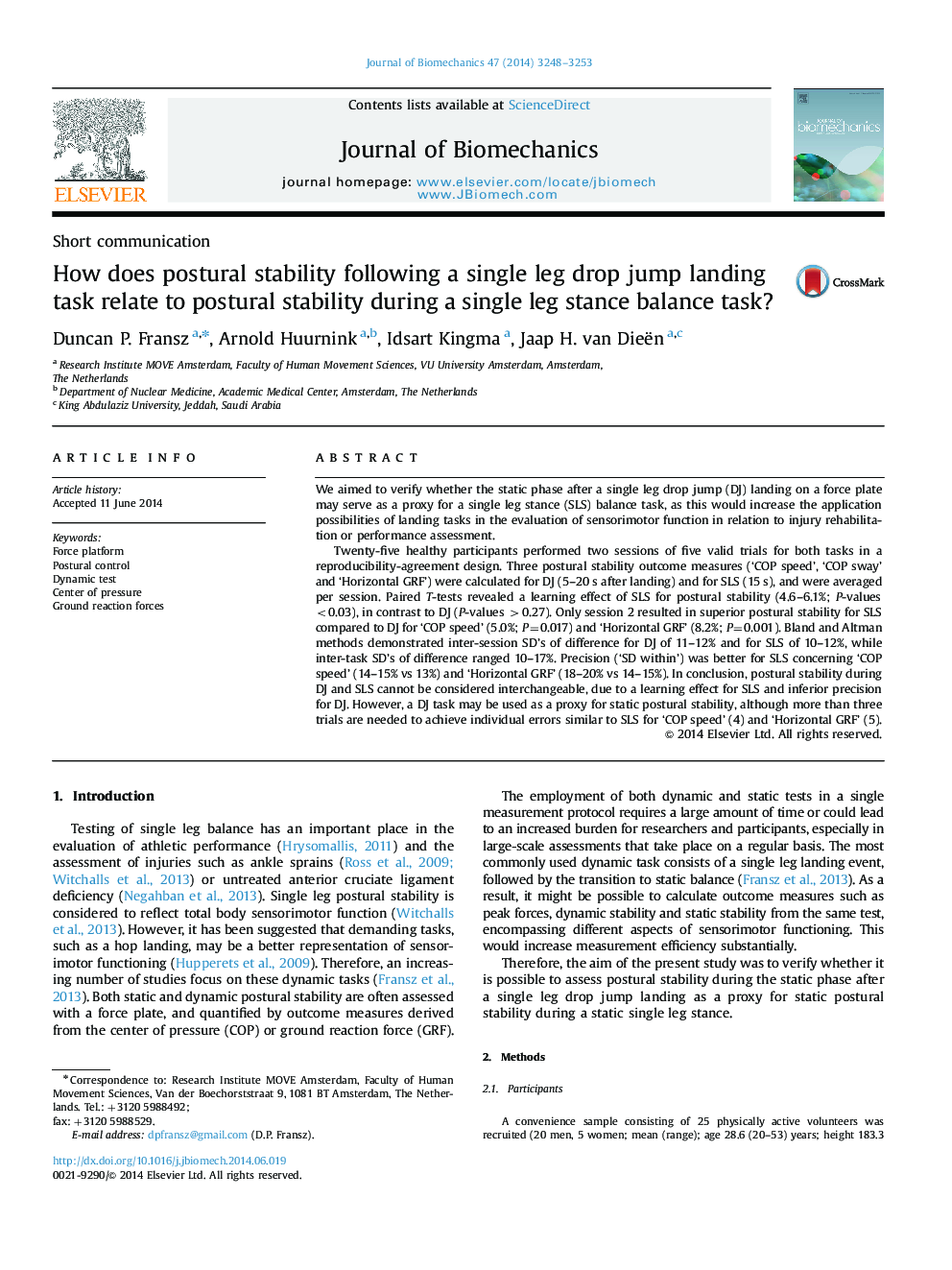| کد مقاله | کد نشریه | سال انتشار | مقاله انگلیسی | نسخه تمام متن |
|---|---|---|---|---|
| 10432149 | 910236 | 2014 | 6 صفحه PDF | دانلود رایگان |
عنوان انگلیسی مقاله ISI
How does postural stability following a single leg drop jump landing task relate to postural stability during a single leg stance balance task?
ترجمه فارسی عنوان
چگونه ثبات پست پس از یک حرکت پای یک حرکت پایینی در ارتباط با ثبات پست در طول یک کار تعادل ایستادن یک پا اتفاق می افتد؟
دانلود مقاله + سفارش ترجمه
دانلود مقاله ISI انگلیسی
رایگان برای ایرانیان
کلمات کلیدی
پلت فرم نیروی کنترل پستی تست پویا، مرکز فشار، نیروهای واکنش زمین،
موضوعات مرتبط
مهندسی و علوم پایه
سایر رشته های مهندسی
مهندسی پزشکی
چکیده انگلیسی
Twenty-five healthy participants performed two sessions of five valid trials for both tasks in a reproducibility-agreement design. Three postural stability outcome measures ('COP speed', 'COP sway' and 'Horizontal GRF') were calculated for DJ (5-20Â s after landing) and for SLS (15Â s), and were averaged per session. Paired T-tests revealed a learning effect of SLS for postural stability (4.6-6.1%; P-values <0.03), in contrast to DJ (P-values >0.27). Only session 2 resulted in superior postural stability for SLS compared to DJ for 'COP speed' (5.0%; P=0.017) and 'Horizontal GRF' (8.2%; P=0.001). Bland and Altman methods demonstrated inter-session SD's of difference for DJ of 11-12% and for SLS of 10-12%, while inter-task SD's of difference ranged 10-17%. Precision ('SD within') was better for SLS concerning 'COP speed' (14-15% vs 13%) and 'Horizontal GRF' (18-20% vs 14-15%). In conclusion, postural stability during DJ and SLS cannot be considered interchangeable, due to a learning effect for SLS and inferior precision for DJ. However, a DJ task may be used as a proxy for static postural stability, although more than three trials are needed to achieve individual errors similar to SLS for 'COP speed' (4) and 'Horizontal GRF' (5).
ناشر
Database: Elsevier - ScienceDirect (ساینس دایرکت)
Journal: Journal of Biomechanics - Volume 47, Issue 12, 22 September 2014, Pages 3248-3253
Journal: Journal of Biomechanics - Volume 47, Issue 12, 22 September 2014, Pages 3248-3253
نویسندگان
Duncan P. Fransz, Arnold Huurnink, Idsart Kingma, Jaap H. van Dieën,
